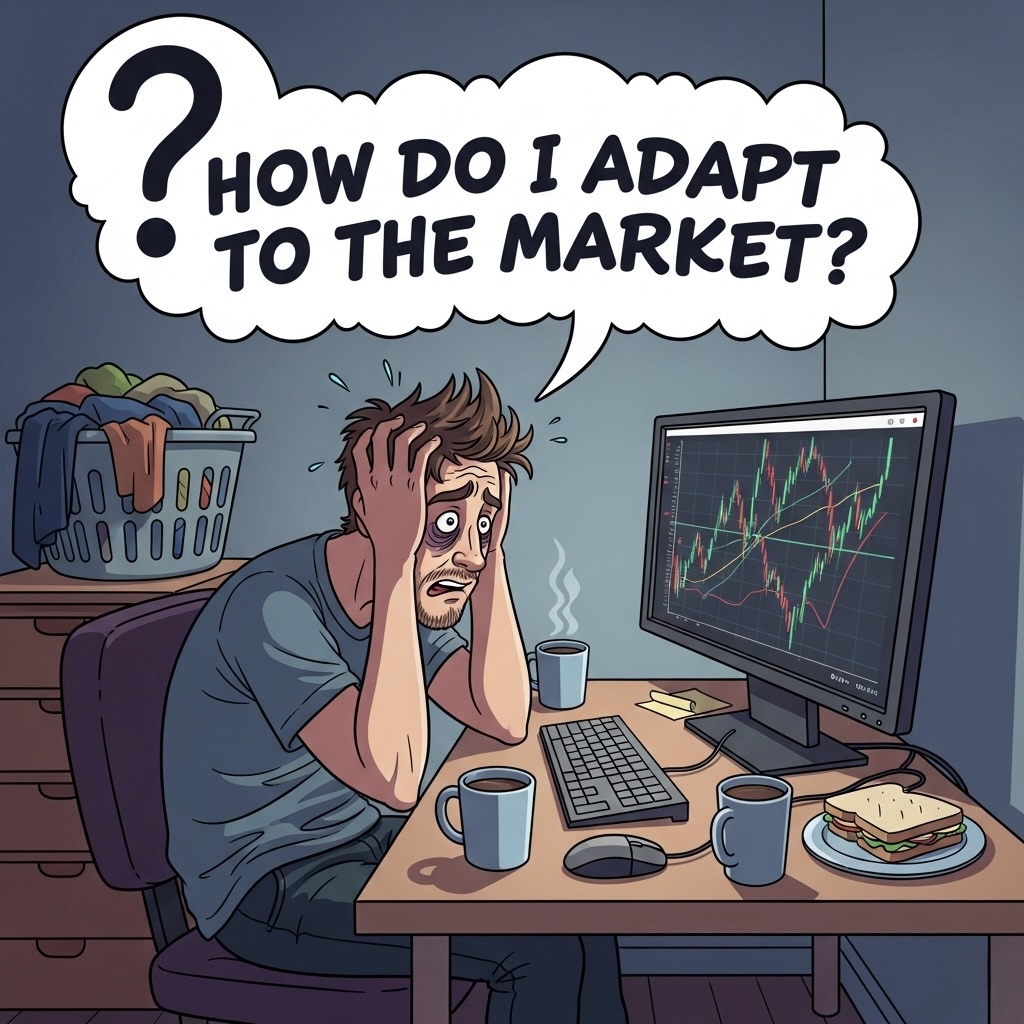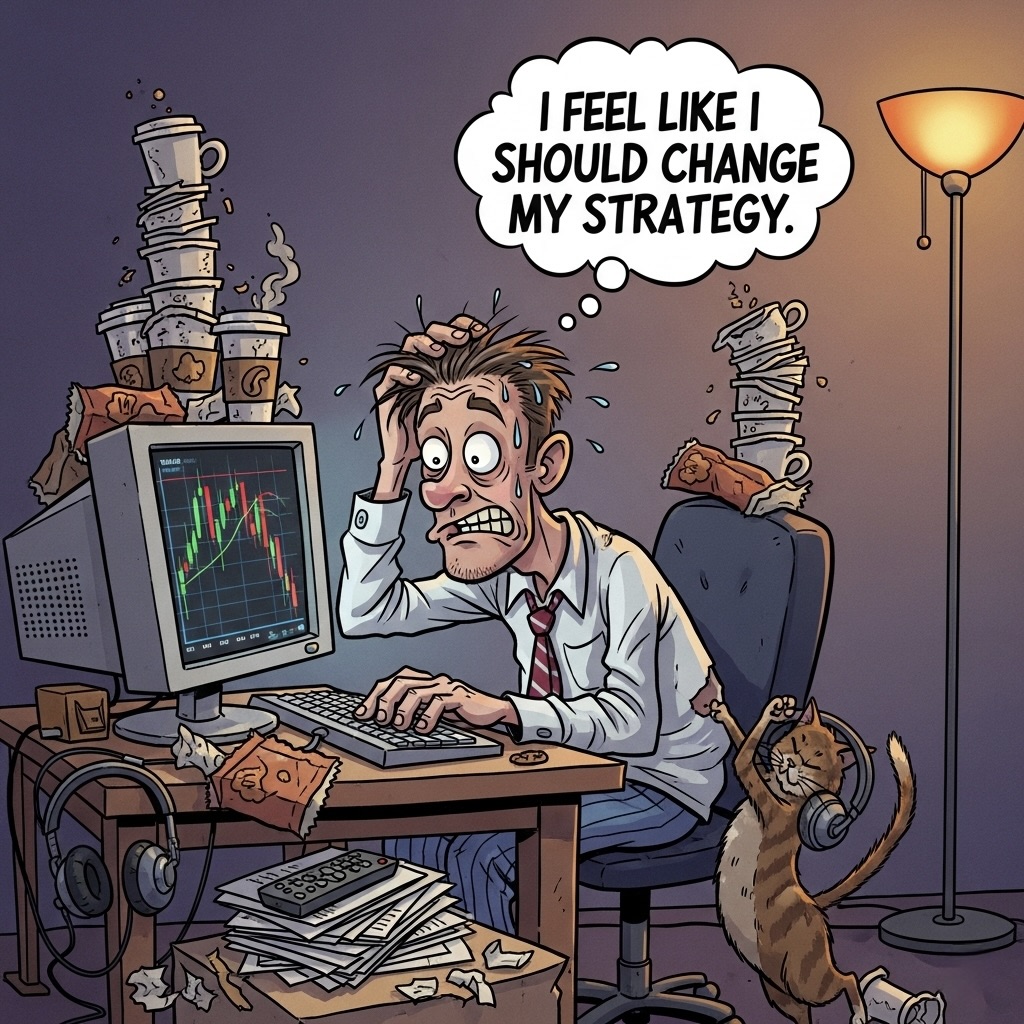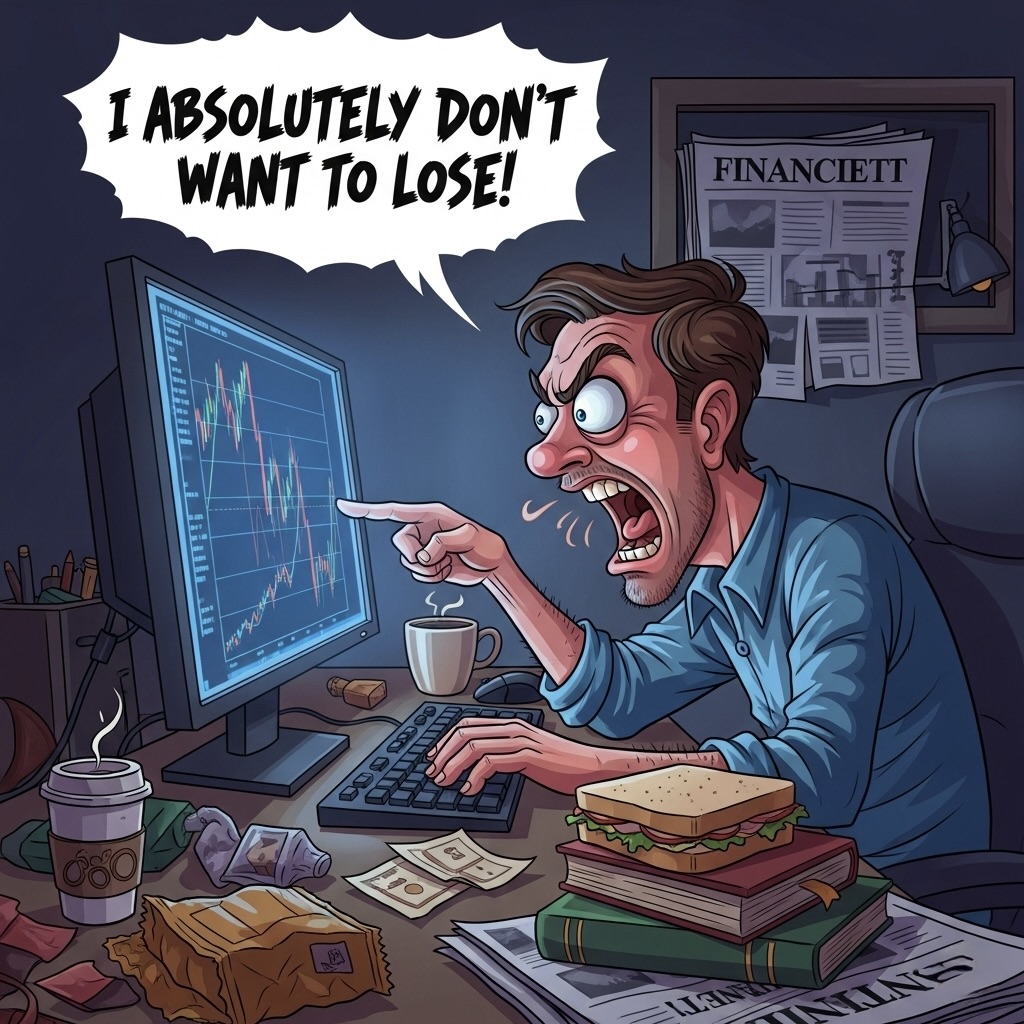How to Adapt to the Market 🧵
Many people misunderstand the phrase “adapting to the market.”
It does not mean adjusting your strategy to fit the current market trend.
🧵1/5
Many people misunderstand the phrase “adapting to the market.”
It does not mean adjusting your strategy to fit the current market trend.
🧵1/5

2/5
To “adapt to the market” is not to change your approach constantly in response to short-term fluctuations.
It means simply to wait.
By waiting, you can consistently trade under the same conditions, making “market changes” irrelevant to you.
No matter how much the chart moves, you don’t need to capture every swing.
You only wait for the conditions that fit your plan and trade exclusively in those moments.
To “adapt to the market” is not to change your approach constantly in response to short-term fluctuations.
It means simply to wait.
By waiting, you can consistently trade under the same conditions, making “market changes” irrelevant to you.
No matter how much the chart moves, you don’t need to capture every swing.
You only wait for the conditions that fit your plan and trade exclusively in those moments.
3/5
Those who read my blog know this already: I build scenarios in advance, wait for them, and then execute the same trade over and over only when those scenarios play out.
No matter how much the chart moves, anything that doesn’t match my setup is irrelevant to me.
I never think “It’s a waste not to capture this move” and then create a new strategy just to chase it.
In fact, I don’t even feel that the market is “changing.”
Yes, the chart in front of me moves, and if you want to call that change, fine—but at a higher level of abstraction, all you ever see are trends and ranges repeating themselves.
I see trading as the acceptance of short-term randomness and the pursuit of long-term consistency, letting the law of large numbers play out.
From this abstract and long-term perspective, the market doesn’t really appear to change.
In the end, within the repeating cycles of trends and ranges, my rules carve out the same setups for me, and I trade only those points.
Everything else is irrelevant.
Those who read my blog know this already: I build scenarios in advance, wait for them, and then execute the same trade over and over only when those scenarios play out.
No matter how much the chart moves, anything that doesn’t match my setup is irrelevant to me.
I never think “It’s a waste not to capture this move” and then create a new strategy just to chase it.
In fact, I don’t even feel that the market is “changing.”
Yes, the chart in front of me moves, and if you want to call that change, fine—but at a higher level of abstraction, all you ever see are trends and ranges repeating themselves.
I see trading as the acceptance of short-term randomness and the pursuit of long-term consistency, letting the law of large numbers play out.
From this abstract and long-term perspective, the market doesn’t really appear to change.
In the end, within the repeating cycles of trends and ranges, my rules carve out the same setups for me, and I trade only those points.
Everything else is irrelevant.
4/5
“So what should you do when the market changes?”
As I said, the chart moves, and if you choose to call that change, then yes—the market changes every day.
But in that sense, when the market “changes,” all you have to do is wait for it to “change again.”
There is no need to force trades where your rules don’t apply.
People often repeat the phrase “No strategy works forever,” but many misunderstand it to mean “a strategy suddenly stops working and never works again.”
That’s not it.
Using a trend-following strategy as an example, it simply means “a trend doesn’t last forever, but another trend will eventually appear.”
Trends don’t last forever.
But they always return.
That is why you wait.
“So what should you do when the market changes?”
As I said, the chart moves, and if you choose to call that change, then yes—the market changes every day.
But in that sense, when the market “changes,” all you have to do is wait for it to “change again.”
There is no need to force trades where your rules don’t apply.
People often repeat the phrase “No strategy works forever,” but many misunderstand it to mean “a strategy suddenly stops working and never works again.”
That’s not it.
Using a trend-following strategy as an example, it simply means “a trend doesn’t last forever, but another trend will eventually appear.”
Trends don’t last forever.
But they always return.
That is why you wait.
5/5
To “adapt to the market” is nothing more than to wait.
If you misunderstand this, you’ll be tossed around by randomness, trapped in an endless loop of tweaking and improvement.
For probability to work in your favor, you must act with consistency and follow your rules.
The market does move every day, and in that sense, it does change.
But that is precisely why you should not try to capture every move.
Instead, wait for your favorable conditions to appear again.
That is what it means to adapt.
Thanks for reading!
If you enjoyed this thread, check out my books on trading.
E-book
payhip.com/YumiSakura/col…
Paperback
【THE PATH TO SUCCESS IN TRADING】
a.co/d/fXmRhIa
【Trading Psychology】
a.co/d/d0QJMxK
Hope these insights help your trading journey😊
To “adapt to the market” is nothing more than to wait.
If you misunderstand this, you’ll be tossed around by randomness, trapped in an endless loop of tweaking and improvement.
For probability to work in your favor, you must act with consistency and follow your rules.
The market does move every day, and in that sense, it does change.
But that is precisely why you should not try to capture every move.
Instead, wait for your favorable conditions to appear again.
That is what it means to adapt.
Thanks for reading!
If you enjoyed this thread, check out my books on trading.
E-book
payhip.com/YumiSakura/col…
Paperback
【THE PATH TO SUCCESS IN TRADING】
a.co/d/fXmRhIa
【Trading Psychology】
a.co/d/d0QJMxK
Hope these insights help your trading journey😊
• • •
Missing some Tweet in this thread? You can try to
force a refresh










